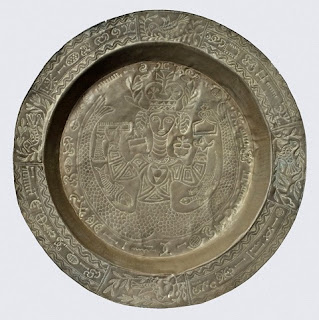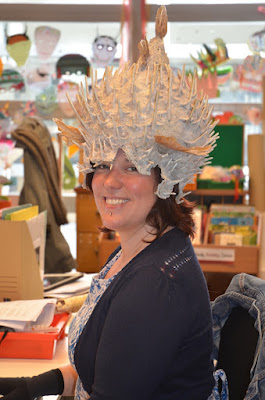As the new VERVE Outreach and Activities Officer in the Education Team at the Pitt Rivers Museum I was delighted to welcome 70 Year 9 students from
Langtree School to the Museum this week. They were visiting as part of the 'Amazing Amulets' project, a partnership between the Pitt Rivers Museum and Langtree School.
For this project all 140 Year 9 Design and Technology students visit the museum for inspiration, then work with jewellery designer-maker
Kate Coker in school to each make their own copper amulet using the
repoussé technique. The project will culminate in an
exhibition at the Pitt Rivers Museum on display from 6 June to 11 September 2016.
 |
Langtree student sketching in the Pitt Rivers Museum © Pitt Rivers Museum
|
 |
| Langtree student museum amulet sketches © Pitt Rivers Museum |
The students visited the Museum to gather ideas from their designs from artefacts on display. They looked at the Amulets and Charms display downstairs in the Museum, including these examples:
 |
| Glass Amulet Eye 1885.3.4 © Pitt Rivers Museum |
 |
| Tunisian Hand of Fatima 1917.9.74 © Pitt Rivers Museum |
 |
| Italian cimaruta 1937.9.19 © Pitt Rivers Museum |
They also looked at examples of
repoussé metalwork on display. R
epoussé is the technique of ornamenting and shaping soft metal by hammering the reverse side. Examples they saw on display include these beautiful artefacts:
 |
Brass treasure box from Ghana 1935.56.12
© Pitt Rivers Museum |
 |
Priest's headdress from Ethiopia 1995.5.2
© Pitt Rivers Museum |
Back in school the students will spend six weeks creating their copper pieces at school under Kate Coker's expert tuition. They will learn to use a new material - copper - and a range of new tools for creating their design. The first group of 70 students have already completed their amulets and we are looking forward to putting these on display in the Lower Gallery from 7 June 2016.
Sonja Allen, Head of Design technology at Langtree School, said:
The Amazing Amulet project was a fantastic opportunity for our school and students to work alongside professionals from the Pitt Rivers Museum and Jewellery Designer Kate Coker. This project gave students the opportunity: to conduct first hand research by visiting the museum to obtain knowledge/look at existing amulets, take photographs and produce sketches which were all used to inspire their own amulet designs, learn and use new metal practical work skills and techniques, create their own quality amulet and have their work on display. All students found inspiration from different aspects of the museum but all created a quality amulet using the repoussé and chasing techniques taught and are all very proud of their outcomes.
Beth McDougall
VERVE Outreach and Activities Officer














